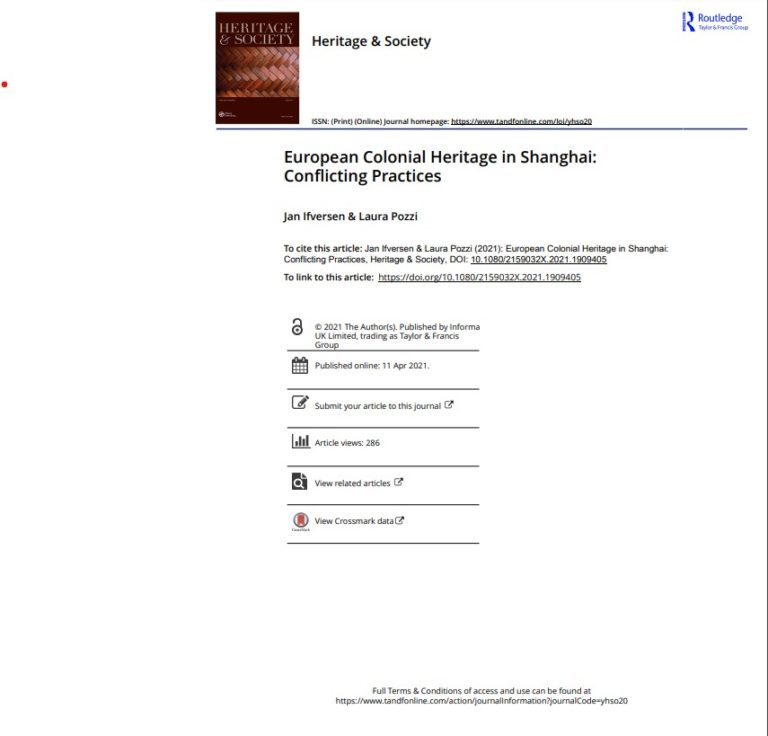This article investigates various heritage-related practices in the city of Shanghai since the end of colonialism. With the establishment of the People’s Republic of China in 1949, the dominant approach was to remove the colonial heritage and replace it with a communist narrative of the people and its heroes. The introduction of market socialism in the 1990s led to a revival of the colonial heritage, but in a form that presented the city as a cosmopolitan and consumer-oriented center. The role of the colonial heritage in the dramatic change in the cityscape since the 1990s has often been viewed as nostalgic. This article analyses nostalgia as a reframing of the colonial heritage, in which it reappears as the design of communist extravagance or “conspicuous communism.” Through an analysis of the newly opened Shanghai History Museum, this article demonstrates that the global design strategy imposed on the cityscape is losing momentum and is now being challenged by a more robust narrative of a city formed more by communism than colonialism. The museum clearly reveals a tension between removing and reframing colonial heritage. Colonial heritage reemerging in a positive way is rare, but may be found in a fascination with the darker and unruly forces of colonial Shanghai, or with objects that tend to disrupt the dominant approaches of removal and reframing.

